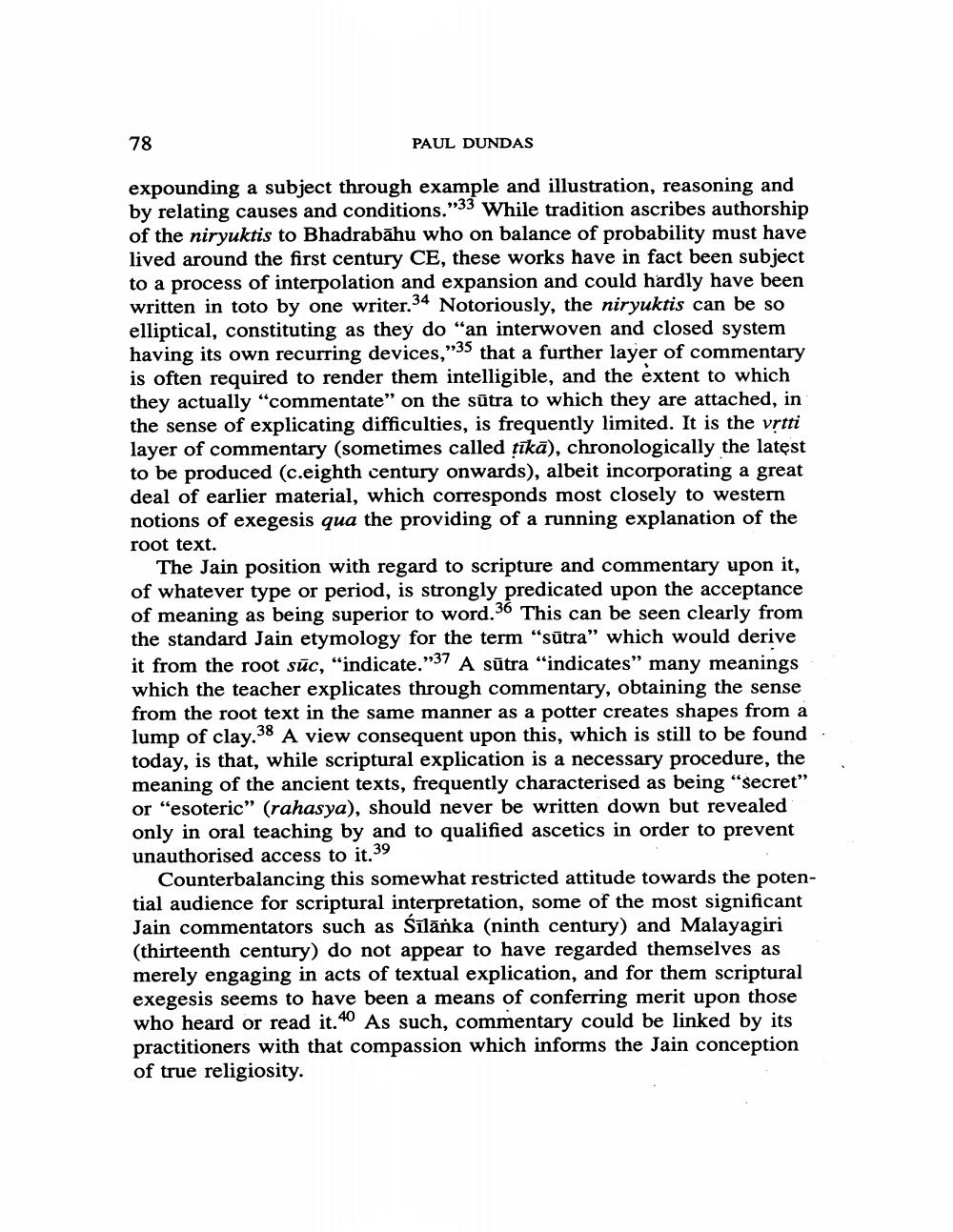Book Title: Somnolent Stras Sriptural Cmmentary In Svetambara Jainism Author(s): Paul Dundas Publisher: Paul Dundas View full book textPage 6
________________ 78 PAUL DUNDAS expounding a subject through example and illustration, reasoning and by relating causes and conditions."33 While tradition ascribes authorship of the niryuktis to Bhadrabāhu who on balance of probability must have lived around the first century CE, these works have in fact been subject to a process of interpolation and expansion and could hardly have been written in toto by one writer.34 Notoriously, the niryuktis can be so elliptical, constituting as they do "an interwoven and closed system having its own recurring devices,"35 that a further layer of commentary is often required to render them intelligible, and the extent to which they actually “commentate" on the sūtra to which they are attached, in the sense of explicating difficulties, is frequently limited. It is the vrtti layer of commentary (sometimes called tīkā), chronologically the latest to be produced (c.eighth century onwards), albeit incorporating a great deal of earlier material, which corresponds most closely to western notions of exegesis qua the providing of a running explanation of the root text. The Jain position with regard to scripture and commentary upon it, of whatever type or period, is strongly predicated upon the acceptance of meaning as being superior to word.36 This can be seen clearly from the standard Jain etymology for the term "sūtra" which would derive it from the root sūc, "indicate."37 A sūtra "indicates” many meanings which the teacher explicates through commentary, obtaining the sense from the root text in the same manner as a potter creates shapes from a lump of clay:38 A view consequent upon this, which is still to be found. today, is that, while scriptural explication is a necessary procedure, the meaning of the ancient texts, frequently characterised as being “secret” or "esoteric” (rahasya), should never be written down but revealed only in oral teaching by and to qualified ascetics in order to prevent unauthorised access to it.39 Counterbalancing this somewhat restricted attitude towards the potential audience for scriptural interpretation, some of the most significant Jain commentators such as Śīlāňka (ninth century) and Malayagiri (thirteenth century) do not appear to have regarded themselves as merely engaging in acts of textual explication, and for them scriptural exegesis seems to have been a means of conferring merit upon those who heard or read it.40 As such, commentary could be linked by its practitioners with that compassion which informs the Jain conception of true religiosity.Page Navigation
1 ... 4 5 6 7 8 9 10 11 12 13 14 15 16 17 18 19 20 21 22 23 24 25 26 27 28 29
